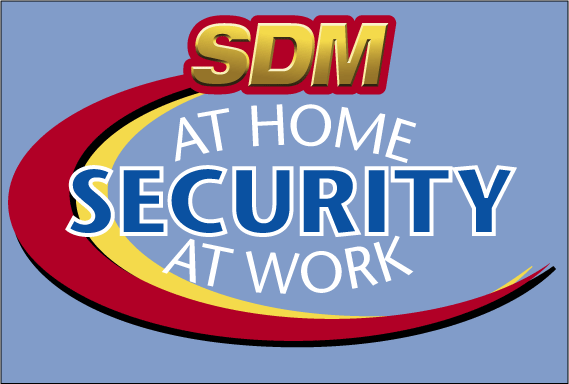
Alarm companies have recently reported to SDM that the market demand for commercial fire alarm systems – both mandated and non-mandated – has grown significantly over the past 18 months. Dealers say that while the adoption of published codes – and strict enforcement by Authorities Having Jurisdiction (AHJ) – may be part of the reason, other market forces such as insurance company requirements and the necessity of protecting high-tech equipment, also are influencing fire alarm sales. High-profile fires sometimes incite the public to demand change, but corresponding code changes come about much less quickly than the response by building owners and managers to install comprehensive fire detection and/or suppression systems.
American businesses and institutions have never been more concerned about security and safety as they are now, so Security Distributing & Marketing set out to measure the industry’s progress in providing that security. In a series of articles, SDM reports the results of the first-ever research that asks Americans about electronic security measures used at work. To achieve simplicity and consistency, SDM’s survey asked which of six different security measures were used at work: burglar alarms, fire alarms, video surveillance, door locks, card access/keypads, and ID badges. These results were cross-referenced by demographic segments, such as major metropolitan areas, to provide a gauge of the present and a benchmark for the future.
This article in the series, SDM’s Consumer Study, Workplace & Home Security, focuses on the results of the survey question, “Which of the following security measures are used in your workplace?†and the response to the fire alarm choice. Across the nation, 66 percent – or two-thirds – of employed people in the United States indicate that a fire alarm system is present in their workplace. SDM also viewed the results to this question on a city-by-city basis and found that the answer varied widely.
We then talked to security professionals to help interpret the data, to tell us what the business is like in their metropolitan area. The answers gave us context for our results and helped paint a picture of the market in their area. SDM profiles five of those metropolitan market areas in this article.

Minneapolis Is Enveloped into State’s Strict Code Enforcement
SDM’s Consumer Study, Workplace & Home Security, found that 77 percent of people in the Minneapolis area claim there is a fire alarm in their workplace, putting that city at No. 2 in SDM’s study of security in the 30 largest U.S. cities.A combination of strict code enforcement by the state of Minnesota and a flush of growth in high-tech businesses may help explain why people in Minneapolis report the second highest rate of fire alarm systems, says Leigh J. Johnson, CEO of Custom Alarm in Rochester, Minn.
“This region is more of a high-tech region,†Johnson notes, naming General Mills and Metronomics among the firms located in the Twin Cities.
There are just over 300,000 people living in Minneapolis, according to the 2000 Census, and 72 percent of the population is in the labor force. Among the labor force, approximately 70 percent are white-collar workers, meaning they define themselves as working in management, professional and related occupations; or sales and office occupations. Another 16 percent perform service jobs.
“You don’t have a lot of heavy manufacturing,†Johnson says. One section of the city is known as “medical alley,†he claims, for the number of health-related businesses located there.
Another growth area for fire alarms has been in schools.
“There is a lot more pressure in the education market. There is an overall emphasis in the school market to increase security and fire, going along the same route after some incidents,†Johnson says.
Both state and local officials have taken a hard line on adopting and enforcing fire code standards.
“I think an increased emphasis by state fire marshals is creating the need for better systems,†Johnson says. “More communities are adopting the International Building Code.â€
minneapolis-st. paul,
minnesota
• Population rank: 15
• Percentage of white-collar workers: 67% Minneapolis; 64% St. Paul
• Percentage of burglar alarms in the workplace: 44%
• Percentage of card access/keypads in the workplace: 50%
• Percentage of video surveillance cameras in the workplace: 44%
• Percentage of fire alarm systems in the workplace: 77%

Atlanta’s Business Expansion Keeps the Market Strong
The fire alarm business in Atlanta feels the heat, as demand from business expansion and strict code enforcement drives installation of fire alarm systems.An explosion of new business growth centered around the expanding airport in Atlanta, and tight city codes, help account for the trend, explains Counte Cooley, president and owner, Electronic Sales Co. Inc., Gainesville, Ga. and vice president of the National Burglar & Fire Alarm Association.
“When you have a city that’s growing industry, you have a new opportunity to make everyone adhere to the codes. Old cities with limited growth usually aren’t as active. A lot of [facilities] are grandfathered in until they get remodeled,†Cooley notes. “Cities in the Atlanta area have some real old buildings that are not brought up to date, but Atlanta has a big renovation-rehabilitation effort.â€
Just over 410,000 people live in Atlanta, the 2000 Census showed. About 64 percent of Atlanta residents are in the labor force.
City officials want focused growth that will cause Atlanta’s star to rise, Cooley says.
“[Atlanta officials want to be] the hub of the Southeast, with the international Atlanta airport and the Olympics,†he says. The Hartsfield-Jackson Atlanta International Airport recently got a new $1 billion fifth runway, creating an airport that rivals Chicago’s O’Hare.
In Atlanta, part of being a growing city is keeping businesses in line with strict fire codes. “They keep the codes tight,†Cooley says. “It’s all very, very stringent. Therefore, even the simplest little neighborhood bar has to have a $3,000 fire alarm.â€
But with or without a government mandate, the high-tech market demands a high level of protection.
“This is the city of the future. The more IT departments you see around, the more fire suppression you’re going to have,†Cooley notes.
A company’s information technology department often controls that company’s operations around the world. “If that main computer goes out in that one 1,200 square-foot room [from fire damage], you’re dead in the water,†he says.
And with that sector of the Atlanta business community growing by leaps and bounds, “you can bet your boots [you] have a lot of fire suppression,†Cooley declares.
Atlanta, Georgia
• Population rank: 11
• Percentage of white-collar workers: 66%
• Percentage of burglar alarms in the workplace: 52%
• Percentage of card access/keypads in the workplace: 44%
• Percentage of video surveillance cameras in the workplace: 49%
• Percentage of fire alarm systems in the workplace: 75%

Charlotte: Lowest Percentage of Workplace Fire Alarms
In Atlanta, the market for fire alarm systems is as hot as the summers, but things aren’t quite as balmy in Charlotte, N.C.The SDM study found that 54 percent of people in the Charlotte, N.C., metropolitan area report having a fire alarm system in their workplace, the lowest percentage on SDM’s list of the 30 largest U.S. cities with fire alarm systems.
About 540,000 people live in Charlotte, and 71 percent are employed.
One important factor is a city’s business growth, because new buildings have to have a fire alarm and are often held to newer, stricter codes than facilities built years ago.
“We’ve had steady growth, not a growth spurt,†says Wiley Fox, vice president of sales and finance at Charlotte’s Sonitrol Security Services Inc. And much of that growth, he says, has been residential rather than commercial.
“We’ve had a lot of high-rise, multi-tenant residential building,†he notes. “Commercial business has been good, better than average, but it’s slowed somewhat,†he says. “Like anybody would say, we want to do more fire.â€
Charlotte, North Carolina
• Population rank: 28
• Percentage of white-collar workers: 67%
• Percentage of burglar alarms in the workplace: 54%
• Percentage of card access/keypads in the workplace: 25%
• Percentage of video surveillance cameras in the workplace: 37%
• Percentage of fire alarm systems in the workplace: 54%

Chicago: A Long History of Fire Tragedy
Chicago has a long history with fire, as the descendents of Mrs. O’Leary and her famous cow can attest.But the percentage of people reporting a fire alarm in their workplace is 69 percent, just slightly above the national result of 66 percent.
“I’m surprised that it’s not a higher number,†says Ed Bonifas, vice president of Chicago-area Alarm Detection Systems Inc., adding that the percentages might be thrown off by the number of people who are self-employed.
The Second City has about 3 million people. Sixty-one percent of people are in the labor force, and among them about 63 percent work white-collar jobs.
“Fire alarms are not supposed to be in your face; it works in background. You don’t have to be aware [until] it goes off,†Bonifas notes.
High-profile emergencies, such as the mob scene at a Chicago nightclub in 2003, can make people more aware of codes, rules and regulations, but that may not result in tighter codes, right away.
“The code cycle is very slow,†Bonifas adds.
Chicago-area fire codes have a wrinkle that makes doing business in the area, well, interesting: since Illinois has no state fire code, each community, from city proper to the many outlying suburbs, can write their own code. And they often do.
Chicago, Illinois
• Population rank: 3
• Percentage of white-collar workers: 61%
• Percentage of burglar alarms in the workplace: 42%
• Percentage of card access/ keypads in the workplace: 45%
• Percentage of video surveillance cameras in the workplace: 45%
• Percentage of fire alarm systems in the workplace: 69%

New York: ‘People Don’t Notice Sprinklers’
Sixty-four percent of New York metropolitan area working consumers report a fire alarm system where they work.“That is less than I might expect,†notes New Yorker Robert Kleinman, CEO of AFA Protective Systems Inc., Syosset, N.Y. He says that historically, not just the government but also market forces have made companies install alarms: without adequate fire protection, no company would insure the building, and without insurance, they couldn’t operate. He adds that the percentage might be lower outside the metro area; SDM’s survey took all five boroughs and the surrounding television viewing area into account.
“A lot of buildings have sprinkler alarms, which a lot of people don’t notice,†Kleinman says.
And, like most places, fire alarms are not on most New Yorkers’ radar. The Sept. 11 attacks made people more aware of security, but not necessarily fire alarms, Kleinman observes.
“People want more security, access control and CCTV,†he says.
New York
• Population rank: 1
• Percentage of white-collar workers: 64%
• Percentage of burglar alarms in the workplace: 43%
• Percentage of card access/ keypads in the workplace: 35%
• Percentage of video surveillance cameras in the workplace: 39%
• Percentage of fire alarm systems in the workplace: 64%
Study Details
To conduct the SDM Consumer Study: Workplace & Home Security, SDM, through its Market Research Division, mailed surveys to 20,000 U.S. households. The household panel was selected to conform to the latest United States Census datafor the nine geographical divisions; within each division by market size, age of head of household, annual household income, and household size. By the cut-off date, there were 13,997 usable returns, resulting in a 70 percent response rate.
Definition of property crime: the offenses of burglary, larceny-theft, motor vehicle theft and arson, as defined by the United States Department of Justice, Federal Bureau of Investigation, Uniform Crime Reports. A word about the city comparisons: SDM’s city areas are drawn by Nielsen Designated Market Areas. With this methodology, the city area is defined by the area a television signal reaches.